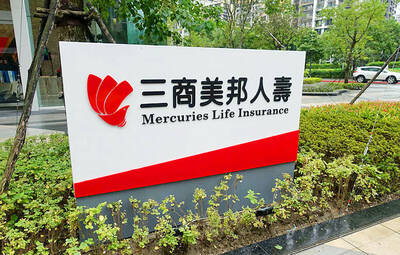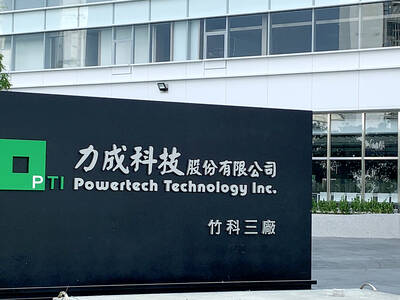At least 10 more purchase missions from China are expected to visit Taiwan by the end of the year, following earlier visits by four such delegations, which have already agreed to buy billions of US dollars of merchandise, Taiwan External Trade Development Council (TAITRA, 外貿協會) chairman Wang Chih-kang (王志剛) said in Beijing yesterday.
Wang said the first delegation organized by China’s Association of Economy and Trade Across the Taiwan Straits (AETATS) arrived in Taiwan in May and had agreed to buy more than US$2 billion in consumer electronics, with US$700 million in orders already received.
A mission composed mainly of Chinese TV makers arrived in June and made plans to purchase US$5 billion in flat panels. Orders for US$1.5 billion of the amount have been received, he said.
Another AETATS-organized delegation composed mostly of Chinese department store representatives that arrived last month plans to buy US$760 million in processed food, with US$160 million in orders already placed, Wang said.
On Aug. 19, another AETATS-organized delegation is expected to purchase up to US$1.2 billion in goods, he said.
Wang made the remarks in a news conference held in Beijing to promote the Taiwan Trade Fair in Nanjing, which is scheduled for Sept. 17 through Sept. 20 at the Nanjing International Expo Center.
The show will gather 620 Taiwanese businesses and display more than 30,000 Taiwanese products, with the exhibition area to cover 38,000m², TAITRA said.

Mercuries Life Insurance Co (三商美邦人壽) shares surged to a seven-month high this week after local media reported that E.Sun Financial Holding Co (玉山金控) had outbid CTBC Financial Holding Co (中信金控) in the financially strained insurer’s ongoing sale process. Shares of the mid-sized life insurer climbed 5.8 percent this week to NT$6.72, extending a nearly 18 percent rally over the past month, as investors bet on the likelihood of an impending takeover. The final round of bidding closed on Thursday, marking a critical step in the 32-year-old insurer’s search for a buyer after years of struggling to meet capital adequacy requirements. Local media reports

US sports leagues rushed to get in on the multi-billion US dollar bonanza of legalized betting, but the arrest of an National Basketball Association (NBA) coach and player in two sprawling US federal investigations show the potential cost of partnering with the gambling industry. Portland Trail Blazers coach Chauncey Billups, a former Detroit Pistons star and an NBA Hall of Famer, was arrested for his alleged role in rigged illegal poker games that prosecutors say were tied to Mafia crime families. Miami Heat guard Terry Rozier was charged with manipulating his play for the benefit of bettors and former NBA player and

The DBS Foundation yesterday announced the launch of two flagship programs, “Silver Motion” and “Happier Caregiver, Healthier Seniors,” in partnership with CCILU Ltd, Hondao Senior Citizens’ Welfare Foundation and the Garden of Hope Foundation to help Taiwan face the challenges of a rapidly aging population. The foundation said it would invest S$4.91 million (US$3.8 million) over three years to foster inclusion and resilience in an aging society. “Aging may bring challenges, but it also brings opportunities. With many Asian markets rapidly becoming super-aged, the DBS Foundation is working with a regional ecosystem of like-minded partners across the private, public and people sectors

BREAKTHROUGH TECH: Powertech expects its fan-out PLP system to become mainstream, saying it can offer three-times greater production throughput Chip packaging service provider Powertech Technology Inc (力成科技) plans to more than double its capital expenditures next year to more than NT$40 billion (US$1.31 billion) as demand for its new panel-level packaging (PLP) technology, primarily used in chips for artificial intelligence (AI) applications, has greatly exceeded what it can supply. A significant portion of the budget, about US$1 billion, would be earmarked for fan-out PLP technology, Powertech told investors yesterday. Its heavy investment in fan-out PLP technology over the past 10 years is expected to bear fruit in 2027 after the technology enters volume production, it said, adding that the tech would